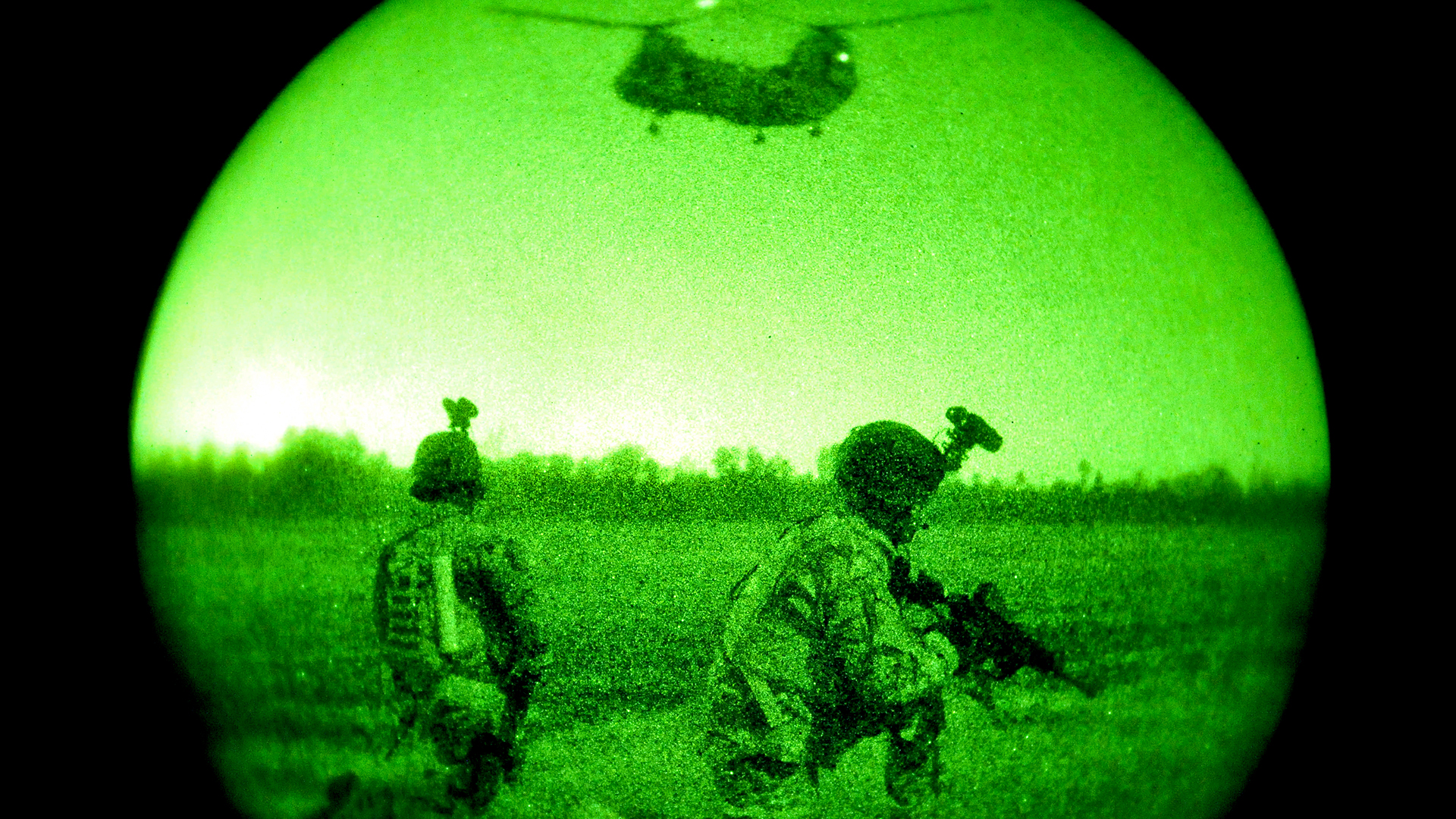

The U.S. military captured two suspected Islamic State group leaders during separate helicopter raids in northern Syria during the last week of September, according to U.S. Central Command, or CENTCOM.
On Sept. 23, U.S. troops captured Abu Halil al-Fad’ani; and five days later, American service members captured Mamduh Ibrahim al-haji Shaykh, CENTCOM announced in separate news releases.
U.S. military officials determined that al-Fad’ani had relationships throughout ISIS’ network in the region and that he was responsible for ISIS operational planning and facilitation in northern Syria, said Army Maj. Geoffrey A. Carmichael, a spokesman for Operation Inherent Resolve.
The Sept. 28 mission targeted al-haji Shaykh to “disrupt the formation of the leadership structure and activities” of ISIS, said Carmichael, who added that al-haji Shaykh was also responsible for ISIS operational planning and facilitation in northern Syria.
Subscribe to Task & Purpose Today. Get the latest military news and culture in your inbox daily.
“Removing al-haji Shaykh from the battlefield further degrades the Daesh’s [ISIS’] ability to regenerate and plot attacks throughout the region,” Carmichael told Task & Purpose on Monday.

Both missions were performed unilaterally, without partner forces in the region, Carmichael said.
U.S. military officials have not identified which U.S. military units took part in the raids – or even what military branch the service members involved came from.
While the U.S.-backed Syrian Democratic forces are containing ISIS in northeast Syria, the terrorist group is growing stronger in central Syria, which is nominally under the control of Syrian President Bashar al-Assad’s regime, said Brian Carter, of the American Enterprise Institute think tank in Washington, D.C.
ISIS in central Syria is able to conduct campaigns with up to 100 fighters at a time, said Carter, the Salafi-Jihadism Movement Team Lead and Analyst with the American Enterprise Institute’s Critical Threats Project.
“Northeastern Syrian cells are smaller than their central Syrian counterparts,” Carter told Task & Purpose. “However, if the U.S. departed Syria, strong ISIS forces in central Syria could easily cross the Euphrates and begin supporting the efforts of ISIS cells in northeastern Syria. Despite regular US-led or US-supported raids against ISIS members in northeastern Syria, ISIS’s continued ability to coerce support from the population means that ISIS will be able to rapidly resurge in northeastern Syria should the US depart from Syria.”
While the Defense Department remains focused on preparing for a war with China and deploying troops to Europe to deter Russian aggression, the war against ISIS has continued largely out of sight and out of mind since the group lost its last enclave of territory in 2019.

Roughly 900 U.S. troops are still deployed to Syria, where they work with the Syrian Democratic Forces, or SDF: A mostly Kurdish organization that also includes Arab and Turkmen militias.
In August, U.S. troops launched 36 missions against ISIS in both Iraq and Syria, marking a total of 308 missions so far this year. By comparison, the U.S. military conducted 313 operations against ISIS in all of 2022.
Complicating the anti-ISIS mission, fighting between the SDF and Arab tribesmen broke out after the SDF arrested the head of an Arab militia on Aug. 27. The fighting, which continued throughout September, threatens to divide anti-ISIS forces in Syria.
SDF spokesman Farhad Shami told Task & Purpose that the fighting that broke out in Syria’s Deir ez-Zor region following Aug. 27 ended on Sept. 5, but sporadic clashes have continued with armed groups trying to cross to the eastern bank of the Euphrates River.
“There have been no major shifts on the ground in Deir Ezzor, aside from these recurring attempts by armed groups to infiltrate our areas,” Shami said. “I want to emphasize that our forces have extended a gesture of pardon and reconciliation for those individuals who were involved in the recent clashes against us and have chosen to flee to Syrian regime-held areas. We are calling upon them to surrender within 15 days.”
Task & Purpose was unable to independently verify Shami’s comments.
Meanwhile, Russian military planes have harassed U.S. aircraft and ground forces in Syria this year. On July 23, a Russian fighter jet flew dangerously close to an MQ-9 Reaper over Syria and dropped flares in front of the drone, one of which damaged the Reaper’s propeller.
Prior to that incident, the head of U.S. Air Forces Central Command, or AFCENT, warned in May that the Russians had harassed U.S. forces in Syria nearly 100 times in the last two months.
The trend continued in August, when Russian fighters flew aggressively around F-35s and other U.S. military aircraft seven times, Air Force Brig Gen. Pat Ryder, a Pentagon spokesman, told reporters on Sept. 1. During several of those incidents, the Russians flew within 1,000 feet of U.S. aircraft.
“These unsafe and unprofessional maneuvers by Russian pilots, the most recent of which AFCENT relayed took place on Aug. 25, increase the risk of miscalculation and are not reflective of the behavior we’d expect from a professional air force,” Ryder said in a statement. “We call on the Russian Air Force to cease this reckless activity, but regardless will continue to remain focused on our mission to ensure the enduring defeat of ISIS.”
The latest on Task & Purpose
- These are the real-life soldiers behind the characters in ‘Band of Brothers’
- The 5 best books about Navy SEALs — according to Navy SEALs
- Green Berets vs Navy SEALs: Inside the Best Combat Diver Competition
- If the government shuts down, here’s what troops can expect
- 5th Special Forces Group wins 2023 Best Combat Diver Competition